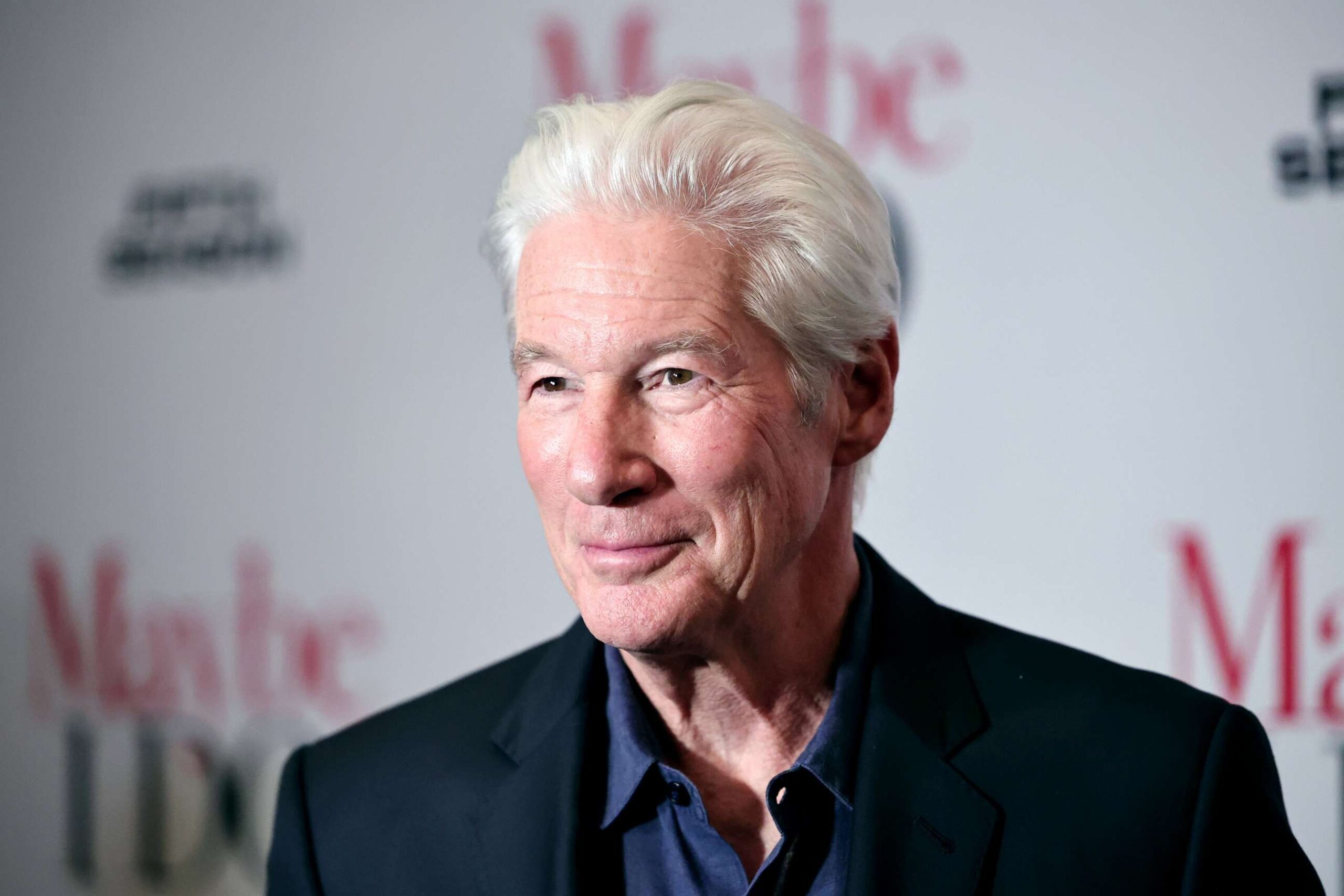
The grandeur of Beijing’s Tiananmen Square on September 3, 2025, served as the stage for China’s most expansive military parade in history, a meticulously choreographed display of national power and diplomatic assertion. Presided over by President Xi Jinping, this event, ostensibly marking the 80th anniversary of China’s victory over Imperial Japan in World War II, transcended mere historical commemoration. It was a potent declaration to the international community, signaling a definitive shift in global power dynamics and China’s unwavering determination to establish itself as a central player in a reconfigured world order. The spectacle involved fighter jets, missiles, and goose-stepping troops, demonstrating Beijing’s formidable capabilities on an unprecedented scale.
This momentous parade was not merely a show of force for domestic consumption, though it undeniably served to rally national pride and bolster support for the ruling Communist Party amidst economic uncertainties and tensions with the United States. Rather, it was a deliberate, outward-facing message, meticulously crafted to project an image of a confident and unyielding China, prepared to challenge established norms and push back against perceived “hegemonic forces.” The presence of key global figures by Xi’s side, coupled with the unveiling of cutting-edge military hardware, underscored a clear and unambiguous intent to reshape international relations and articulate China’s “unstoppable” rise.
The significance of this event reverberated far beyond the symbolic release of 80,000 doves and balloons over Beijing. It offered a rare and comprehensive glimpse into China’s strategic ambitions, its growing military capabilities, and its evolving network of international partnerships. As leaders gathered and advanced weaponry rolled through the heart of the capital, the world watched a carefully constructed narrative unfold, a narrative designed to articulate China’s vision for a future global architecture, one that explicitly seeks to diminish American dominance and assert a new balance of power. The parade therefore represents a pivotal moment, demanding close analysis of its multifarious messages.
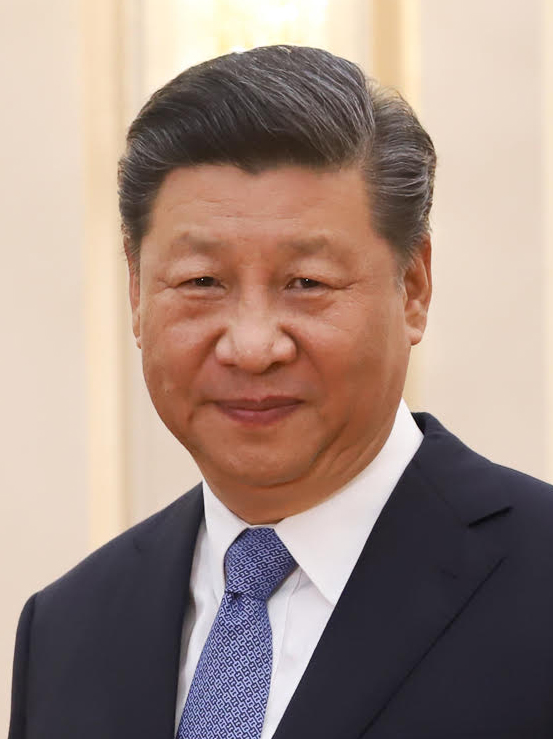
1. **A Defiant Message to the World**: China’s monumental military parade on September 3, 2025, served as an unmistakable declaration that the nation would no longer tolerate being “bullied.” From the rostrum of Tiananmen Gate, President Xi Jinping delivered a defiant warning to rivals, asserting that they should not challenge China’s sovereignty. This powerful message was amplified by the sheer scale of the event, which featured fighter jets, missiles, and goose-stepping troops, all meticulously arranged to project an image of formidable strength and unwavering resolve. Cannons fired 80 times to mark the anniversary, a powerful audible symbol accompanying the visual spectacle.
The core of this defiance stemmed from a deep-seated historical memory, as the parade explicitly evoked wartime experiences to underscore contemporary challenges. The ruling Communist Party leveraged the 80th anniversary of the end of World War II to stoke nationalism, recasting China’s role in the conflict as that of a nation saved by the Party from foreign aggression, Imperial Japan. This historical framing was crucial in rallying domestic support and presenting a united front against what Mr. Xi characterized as efforts by the United States to contain and suppress China, accusing America of trying to block its rightful place in the world.
His declaration that “The Chinese nation is a great nation that fears no tyranny and stands firm on its own feet” encapsulated this spirit of unyielding self-reliance. Xi further drew a direct line between the sacrifices of World War II and the challenges China faces today, stating, “When faced in the past with a life-and-death struggle between justice and evil, light and darkness, progress and reaction, the Chinese people united in hatred of the enemy and rose up in resistance.” This historical parallel framed current geopolitical tensions as another fateful choice, one in which China would firmly side with progress, dialogue, and peace.
Indeed, the parade was designed to make clear that China is strong, fears no one, and is ready to assume a leading role on the global stage. Mr. Xi’s pre-event assertion that his country was “unstoppable” and would “never be intimidated” by bullies was a direct precursor to the spectacle that unfolded. He declared, “Today, mankind is faced with the choice of peace or war, dialogue or confrontation, win-win or zero-sum,” signaling China’s intent to lead towards a cooperative future. This forward-looking message emphasized that “The Chinese people’s rejuvenation cannot be blocked, and the noble goal of the peaceful development of human civilization must triumph,” thereby positioning China as a proactive shaper of global destiny rather than a passive recipient of external pressures. The event explicitly articulated China’s future place in the world, unequivocally backed by its displayed military and diplomatic power.
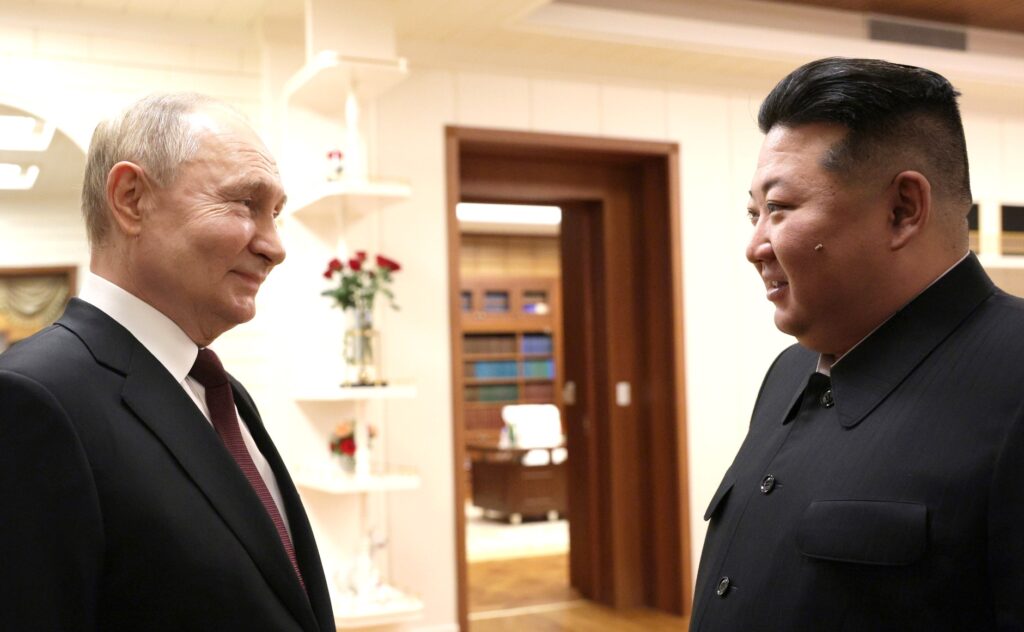
2. **A Strategic Gathering of Leaders**: The viewing gallery at Tiananmen Gate presented a powerful tableau of shifting global allegiances, as President Xi Jinping was conspicuously flanked by leaders representing states that have increasingly challenged or questioned American dominance of the global order. Most notably, President Vladimir V. Putin of Russia and North Korea’s leader, Kim Jong-un, stood prominently by Xi’s side. Their presence, described by observers as an “unprecedented show of solidarity against the US and its allies,” immediately captured international attention and underscored Beijing’s deepening ties with Moscow and Pyongyang, signaling a concerted effort to forge a new bloc.
Beyond these two highly visible figures, the guest list included leaders from Iran, Pakistan, Malaysia, Indonesia, and other “mostly authoritarian nations,” as well as many Southeast Asian and Central Asian countries. This diverse assembly highlighted China’s success in strengthening regional partnerships and rallying support for its vision of a multi-polar world. The deliberate display of unity, especially with Putin and Kim — who had never appeared together in public before — was widely interpreted as a “pointed rebuke to Trump’s faltering attempt to end Russia’s war in Ukraine,” and an “open challenge to America’s waning global leadership.” This was a carefully cultivated moment of geopolitical theater.
At various moments throughout the parade, Xi, Putin, and Kim were observed leaning toward one another, exchanging words, and even sharing smiles, a carefully crafted image of camaraderie. This visual narrative, amplified by state media, projected a “defiant face of a growing bloc of illiberal leaders determined to push back against Western rules and tilt the global balance of power in their favor.” This imagery was specifically designed to demonstrate a united front against Washington, particularly given the backdrop of Trump’s volatile policymaking and trade tariffs that strain relations with allies and rivals alike.
Analysts like Ryan Hass, director of the John L. Thornton China Center at the Brookings Institution, observed that “Xi is driven to gain acceptance of China as a central global power and to revise the international system to better suit China’s preferences.” He further added that Xi viewed “the presence of other leaders at his parade as validating progress toward his goals.” This sentiment was echoed by others who noted the symbolism of the three leaders meeting publicly for the first time, signaling a potential new axis of power in global affairs. The gathering underscored a collective aspiration to challenge the existing international system and advocate for an alternative world order.
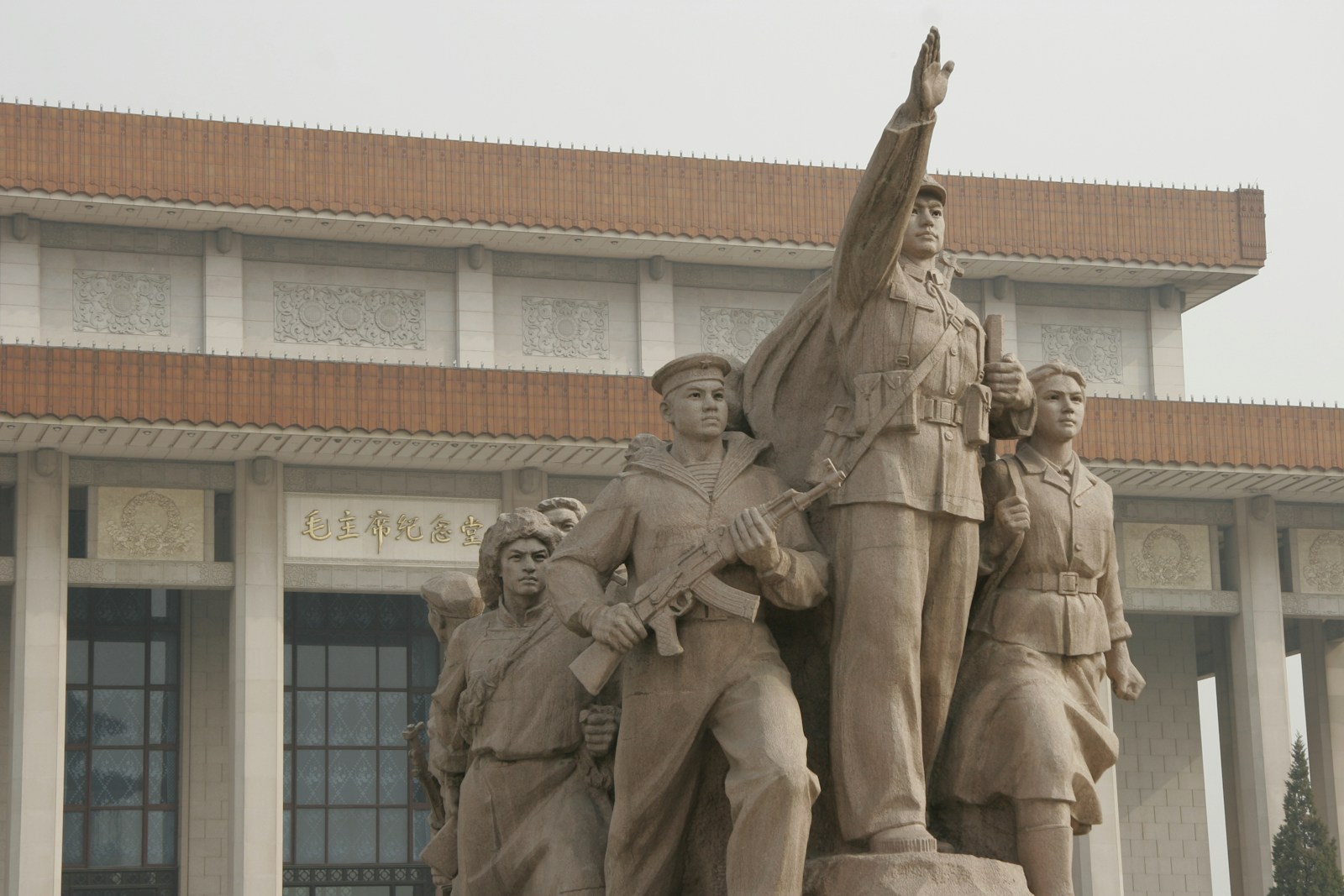
3. **Reclaiming the World War II Narrative**: The 80th anniversary of China’s victory over Imperial Japan in World War II served as the central, symbolic anchor for the grand military parade, but its use was far from a simple historical commemoration. The ruling Communist Party orchestrated a “weekslong campaign” to strategically recast China’s role in the conflict, positioning the Party as the nation’s savior against foreign aggressors, specifically Imperial Japan. This historical reinterpretation was a deliberate political maneuver, aimed at rallying domestic Chinese support and leveraging past sacrifices to legitimize current geopolitical stances, particularly in the face of ongoing tensions with the United States and economic uncertainty.
President Xi Jinping explicitly drew a direct line between the sacrifices of World War II and the challenges China says it faces today. From the rostrum, he declared, “When faced in the past with a life-and-death struggle between justice and evil, light and darkness, progress and reaction, the Chinese people united in hatred of the enemy and rose up in resistance.” This framing allowed him to cast today’s tensions as another “fateful choice, between peace or war, dialogue or confrontation,” with China firmly siding with progress. This narrative, as Joseph Torigian, an associate professor at American University, pointed out, is used by both Xi and Putin to “inoculate future generations against Western values and legitimate the global order they envision,” presenting a concerted effort to reshape historical memory.
The emphasis on China’s role in World War II is a relatively recent development in its historical commemorations. Frans-Paul van der Putten, a specialist in Chinese security, noted that before 2015, military parades primarily referred to the 1949 founding of the People’s Republic. These “V-day parades,” however, allow the CCP to “highlight its role as leading the country that was one of the four main Allied powers that won World War II,” even though the CCP was not in control of the national government at that time. This strategic reframing elevates the CCP’s historical standing and reinforces its legitimacy as the guardian of the nation.
By emphasizing the victory over the Japanese invader, Xi presented himself as the leader of a China that has “overcome the status of humiliated country that everybody can invade,” making a notable reference to historical aggressions like the Eight-Nation Alliance that invaded China in 1901. This calculated re-centering of history aims to restore China’s preeminent role in the brutal conflict, and, as some Chinese history journals suggest, even downplay Western contributions, including “the idea that the West was not particularly kind or generous to China, whereas Russia was.” This re-evaluation of history serves to justify current alliances and future ambitions.
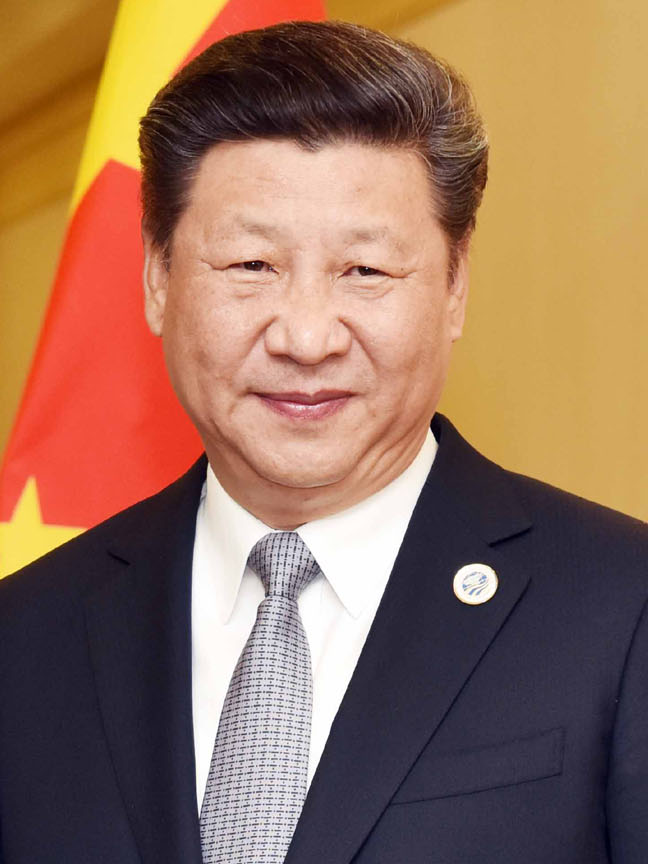
4. **Xi Jinping’s Resolute Nationalist Address**: From the imposing rostrum of Tiananmen Gate, beneath a large portrait of Mao Zedong, President Xi Jinping delivered a profoundly nationalist address that resonated with defiance and self-assertion. His words, delivered in a Mao-style suit, were a powerful declaration of China’s resilience and its determination to shape its own destiny. “The Chinese nation is a great nation that fears no tyranny and stands firm on its own feet,” Xi proclaimed, a statement that immediately underscored the parade’s overarching message of unyielding national strength and sovereignty, directly challenging any perceived external pressures.
Xi’s speech was meticulously crafted to connect China’s past struggles with its present-day aspirations, framing contemporary international relations within a historical context of resistance against aggression. He asserted that the Chinese people “united in hatred of the enemy and rose up in resistance” during World War II, a historical precedent he used to underscore the nation’s capacity for unity and perseverance. By casting today’s global tensions as a “fateful choice, between peace or war, dialogue or confrontation,” he positioned China as a steadfast advocate for progress, dialogue, and peace, while implicitly condemning those who might seek confrontation or a “zero-sum” game.
The address also served to reinforce the legitimacy and enduring role of the Communist Party within China’s national narrative. Echoing the founding father of the People’s Republic, Xi stood among senior Chinese leaders, past and present, symbolically tying the current Party leadership to its revolutionary heritage. His assertion that “The Chinese People’s Liberation Army has always been a heroic force on which the Party and the people can totally rely” further cemented this connection, emphasizing the military’s unwavering loyalty and its integral role in safeguarding national sovereignty and territorial integrity, particularly concerning sensitive issues like Taiwan.
Moreover, Xi’s message was unequivocally forward-looking, proclaiming that “The Chinese people’s rejuvenation cannot be blocked, and the noble goal of the peaceful development of human civilization must triumph.” This aspirational rhetoric, delivered to a crowd of over 50,000 spectators, was designed to inspire national pride and confidence in China’s trajectory towards global leadership. It was a clear, unambiguous statement that China intends to play a central, constructive, and powerful role in shaping the future of international affairs, no longer content with a peripheral position.
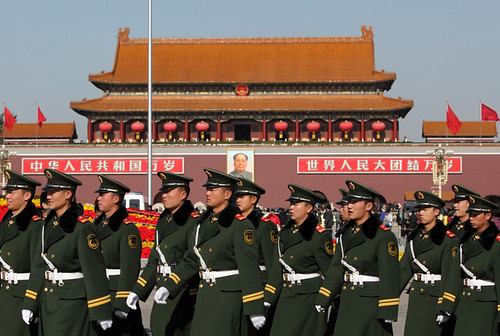
5. **The Unwavering Discipline of the PLA**: The military parade in Beijing offered a breathtaking spectacle of precision and discipline, showcasing the People’s Liberation Army (PLA) as a formidable and meticulously trained force. Thousands of goose-stepping troops marched past Tiananmen Gate in perfect unison, each strike of their boots echoing through the stands of 50,000 guests, creating a powerful impression of an army in absolute control and readiness. This choreographed display was a testament to the rigorous training and unwavering loyalty that President Xi Jinping has instilled within the ranks, projecting an image of unshakeable military cohesion.
The review of troops by President Xi further emphasized this discipline and the deep-seated loyalty to the Party. From the open sunroof of a Chinese-made Red Flag limousine—a car symbolizing both Mao’s era and China’s ambition for industrial self-reliance—Xi called out, “Greetings, comrades,” and “Comrades, you are working hard!” The response was a perfectly synchronized turn of heads and a unified shout: “Follow the Party! Fight to win! Forge exemplary conduct!” This exchange was not just a formality but a vivid demonstration of the PLA’s adherence to the Party’s command, serving as a powerful message both domestically and internationally about the military’s absolute political alignment and readiness to execute directives.
Beyond the ceremonial aspect, the parade also served to demonstrate the PLA’s tangible “war readiness.” Soldiers holding guns jogged past tanks carrying missiles and swiftly leaped into their vehicles, a clear visual representation of their operational efficiency and preparedness for combat. The display also highlighted China’s investments in military innovation, showcasing a force that, as one user on Chinese social media platform Weibo noted, projected “a showcase of national power,” drawing a stark contrast with perceived “relaxation” in other nations.
Brian Hart, a fellow of the China Power Project at the Center for Strategic and International Studies, noted that Beijing’s goal was to show both domestic and foreign audiences that, despite internal challenges like corruption, its military is “increasingly advanced and lethal.” He highlighted that “Xi Jinping has made military modernization one of his top personal priorities, and he has been relentlessly pushing the military to improve,” with the parade serving as “an opportunity to show off the PLA’s advances under his leadership.” This public exhibition of martial prowess, from synchronized marching to rapid vehicle boarding, underscored the PLA’s transformation under Xi’s leadership into a modern, responsive fighting force.
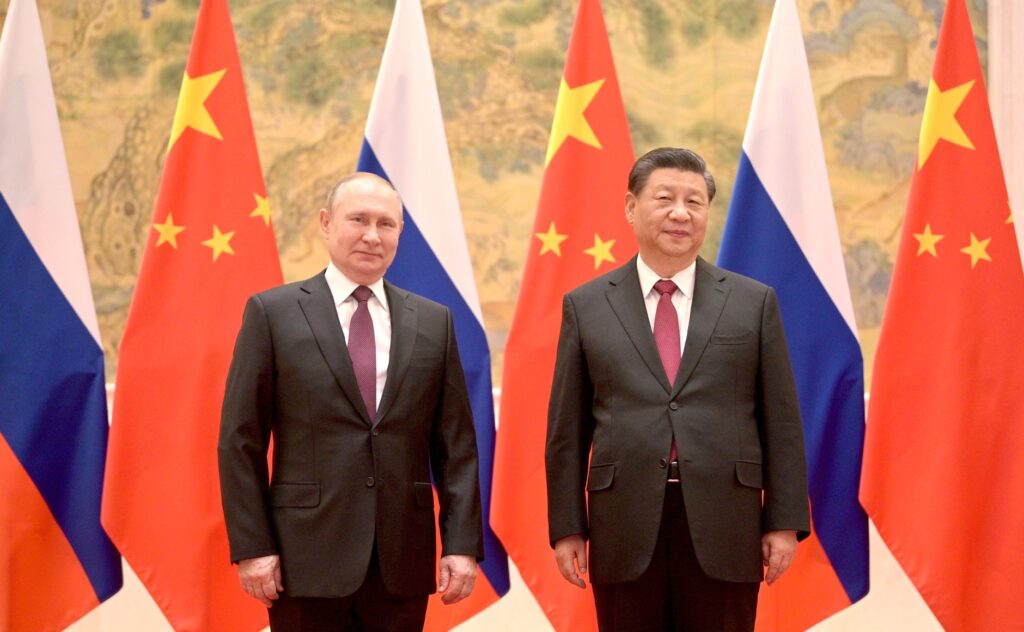
6. **The China-Russia Historical Alignment**: A striking feature of the Beijing military parade was the palpable alignment between China and Russia, not merely in geopolitical aspirations but in their shared historical narratives surrounding World War II. The prominent presence of President Vladimir V. Putin by Xi Jinping’s side highlighted how both nations have sought to use the memory of the war as a foundation for demanding a greater say in the postwar international order. This alignment is rooted in a common perception that victory in the war, though costly, remains “incomplete” for both nations, implying that Western powers have unjustly constrained their global influence.
Joseph Torigian, an associate professor at American University, articulated this shared perspective, stating, “For both Xi and Putin, victory was costly, but incomplete. They believe that ‘hegemonic forces’ still want to impose a foreign model upon them and block their rightful place in the world.” This sentiment underscores a common grievance against a Western-dominated global order, which they view as attempting to dictate terms and limit their influence. By invoking the sacrifices of World War II, both leaders seek to legitimize their current efforts to revise the international system and protect their nations against what they perceive as external ideological and political pressures, positioning themselves as defenders of a more equitable world order.
This historical alignment extends to a shared objective of influencing future generations and solidifying their respective authoritarian governance. Torigian further explained that Xi and Putin “want to use the memory of the war to inoculate future generations against Western values and legitimate the global order they envision.” This strategic use of history serves a dual purpose: it fosters domestic unity by reminding citizens of past struggles and triumphs, providing a moral and historical justification for their assertive foreign policies, and subtly undermining the appeal of Western democratic ideals.
The camaraderie between Xi and Putin was evident in their warm exchanges. Xi referred to Putin as an “old friend,” while Putin called Xi “a real friend.” This public display of rapport, alongside other leaders from the Shanghai Cooperation Organization (SCO) summit held earlier, such as India’s Prime Minister Narendra Modi, cemented this diplomatic and ideological camaraderie. As a headline in the Russian news outlet Komsomolskaya Pravda declared, in reference to Russia, China, and India, “We will build a new world.” This sentiment encapsulates the ambitious scope of this burgeoning alignment, rooted in a shared historical narrative and a vision for a revised international system.

7. **President Trump’s Swift Rebuke**: While Beijing projected an image of formidable strength and unity, the display did not go unnoticed or unchallenged by former United States President Donald Trump. Within minutes of the ceremony’s commencement, Mr. Trump publicly responded from Washington, accusing President Xi Jinping of deliberately overlooking America’s pivotal contributions to China during World War II. His swift reaction underscored the volatile geopolitical climate surrounding the parade.
On Truth Social, his preferred social media platform, Mr. Trump articulated his skepticism by writing that the “big question” was whether Mr. Xi would “mention the massive amount of support and ‘blood’ that The United States of America gave to China in order to help it to secure its FREEDOM from a very unfriendly foreign invader.” This pointed question directly challenged the historical narrative being presented by Beijing, highlighting a significant divergence in how the past is remembered and leveraged for present-day diplomatic purposes.
Adding to his critical commentary, Mr. Trump extended what he termed his “warmest regards to Vladimir Putin, and Kim Jong Un, as you conspire against The United States of America.” This statement not only encapsulated his distrust of the gathering of leaders in Beijing but also served as an open accusation of their collective intent to undermine American global influence. The message was a clear and public expression of his administration’s confrontational stance toward the burgeoning alignment of these nations.
President Trump, who was notably absent from the festivities, having not received an invitation, consistently used the occasion to question the perceived omissions in China’s narrative. His online remarks underscored a broader American concern regarding the parade’s implications for global power dynamics, framing the event not just as a celebration of China’s past, but as a direct challenge to the United States’ historical and contemporary role.
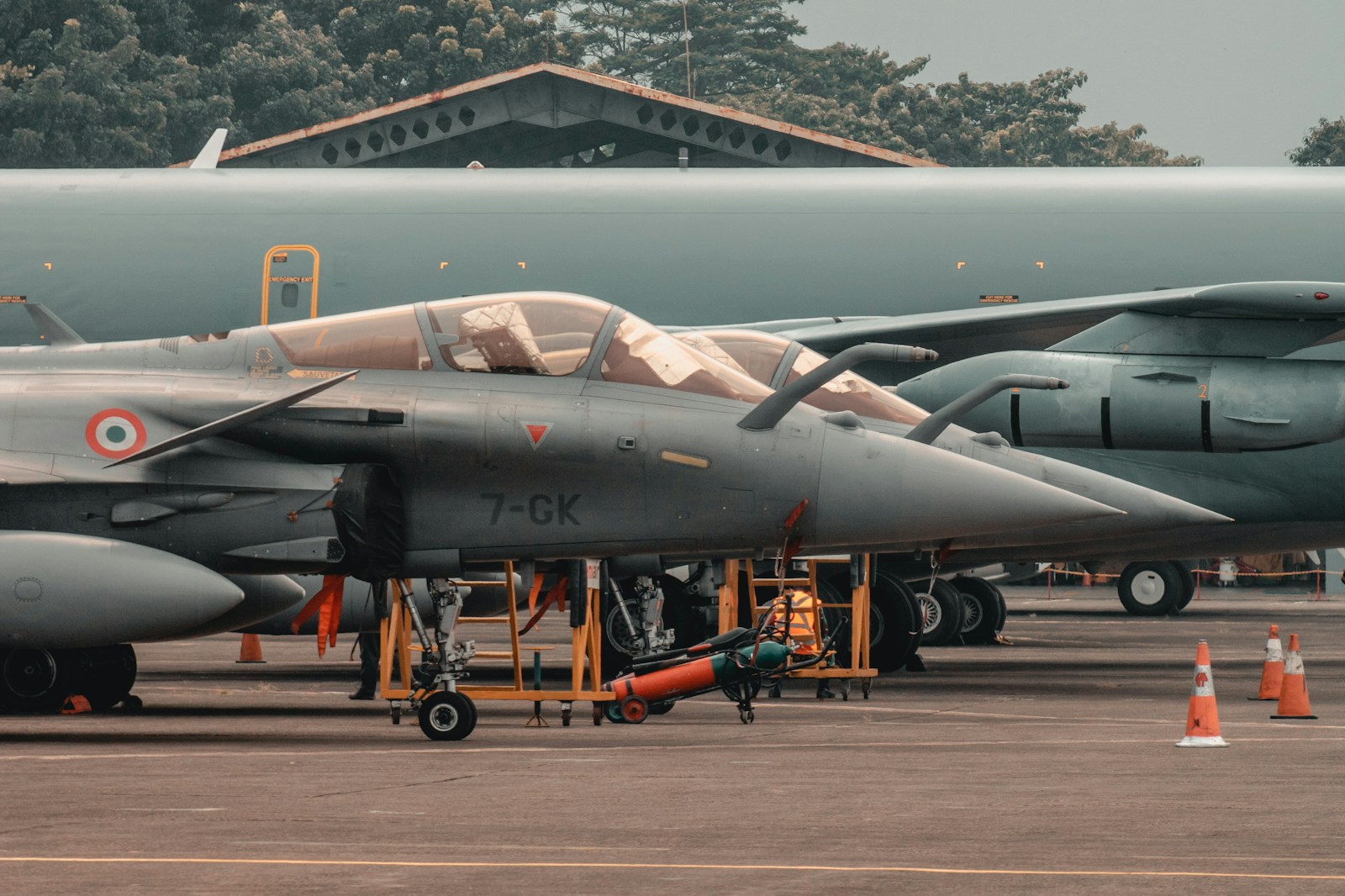
8. **The Unveiling of Advanced Military Technologies**: The Beijing military parade served as an unprecedented showcase for China’s rapid advancements in military technology, featuring an array of sophisticated weaponry, much of which was unveiled to the public for the first time. The spectacle, observed by Pentagon experts and defense officials globally, underscored China’s substantial investments in military innovation and its escalating rivalry with the United States for military dominance, particularly across Asia. This strategic unveiling offered a rare glimpse into the future trajectory of the People’s Liberation Army (PLA).
Among the cutting-edge armaments on display were new ship-destroying missiles, advanced undersea drones, and crewless combat planes, all signaling a significant leap in China’s operational capabilities. Military officials confirmed that the parade included hypersonic missiles, which are known to travel at more than five times the speed of sound, alongside long-range precision strike systems and stealth drones. Dr. Sidharth Kaushal, an expert on missiles, highlighted specific hypersonic systems such as the YJ-17, a hypersonic glide vehicle, and the YJ-19, a hypersonic cruise missile, as areas where China demonstrates global leadership.
China’s commitment to integrating artificial intelligence and autonomous weapons into its military doctrine was also vividly demonstrated. The parade notably featured the AJX002, a giant, 60-foot (18m) underwater nuclear-capable drone, indicating a formidable expansion of its naval capabilities. Additionally, reports of “robotic dog” drones and a “pack of robot wolves” underscored Beijing’s vision of future warfare, where technology and automation play an increasingly central role, a clear effort to position the PLA as a technological leader.
The display further highlighted China’s developing nuclear triad, encompassing land, sea, and air-based deterrents, showcasing its commitment to a comprehensive nuclear arsenal. While China’s nuclear stockpile, numbering in the hundreds of missiles, still trails those of Russia and the United States, it is rapidly expanding in size and developing innovative delivery methods for its warheads. Significantly, the parade’s official site emphasized that all weapons presented were 100 percent “Made in China,” reinforcing the nation’s industrial self-reliance and technological prowess.
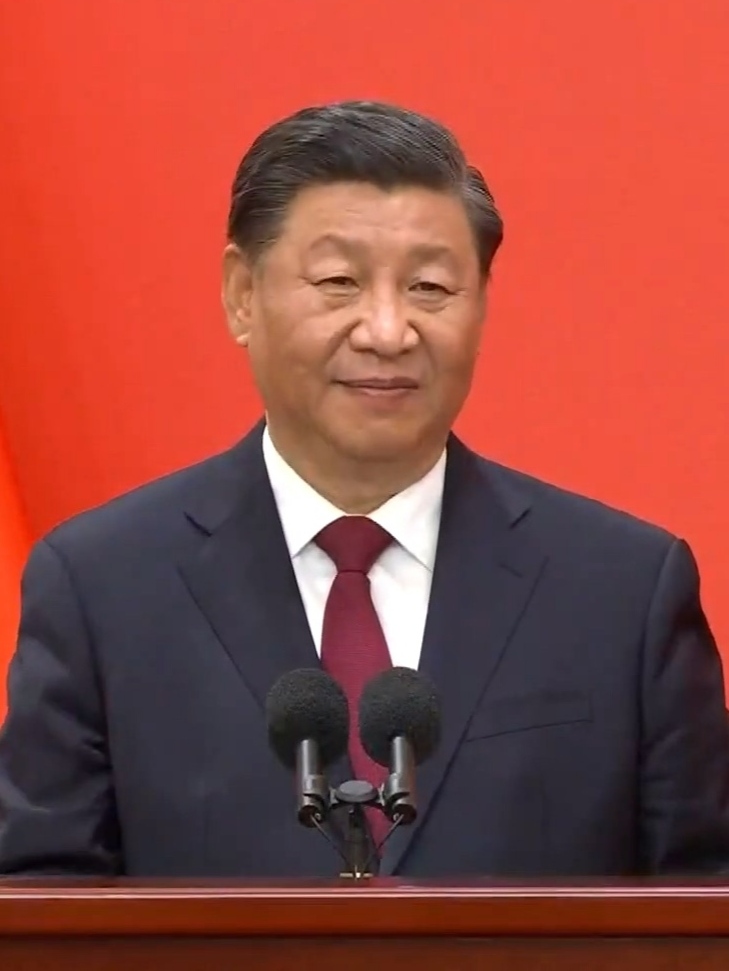
9. **An Implicit Warning to Taiwan**: Amidst the grand display of military power and nationalistic fervor, President Xi Jinping delivered an implicit yet unmistakable warning to Taiwan and its international supporters regarding the sensitivities of its sovereignty. The message was carefully woven into his address, underscoring Beijing’s unwavering stance on territorial integrity and its resolve to prevent any moves toward formal independence for the self-governing island.
From the Tiananmen Gate rostrum, Mr. Xi explicitly vowed to safeguard national sovereignty and territorial integrity. He emphasized that “The Chinese People’s Liberation Army has always been a heroic force on which the Party and the people can totally rely.” This statement served as a potent reminder of the PLA’s core mission to protect China’s perceived territorial claims, including Taiwan, framing it as an internal matter of national unity and security.
The strategic placement of this rhetoric within a parade showcasing advanced military capabilities intensified its impact. By linking the PLA’s unwavering loyalty to the Communist Party and its integral role in preserving national unity, particularly in relation to “sensitive issues like Taiwan,” Mr. Xi conveyed Beijing’s determination to use all necessary means to prevent any perceived deviation from the “One China” principle. This deliberate juxtaposition of words and military might projected a clear message without needing to be overtly stated.
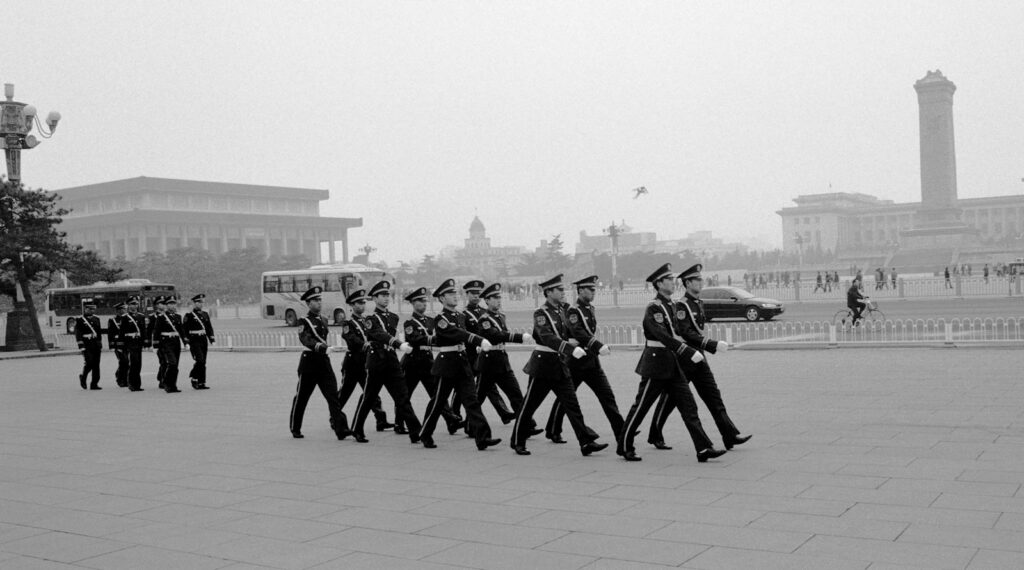
10. **The Deepening Global Divides**: The guest list for Beijing’s military parade starkly illuminated a deepening chasm between China and major Western democracies, emphasizing Beijing’s close alignment with Moscow, particularly against the backdrop of Russia’s war in Ukraine. Conspicuously absent were high-level representatives from Western nations, including the United States, underscoring a growing ideological and geopolitical divergence.
In contrast, the parade saw a significant presence of leaders from many Southeast Asian and Central Asian nations, alongside figures from Iran, Pakistan, Malaysia, and Indonesia. This diverse assembly demonstrated China’s considerable success in strengthening regional partnerships and rallying support for its vision of a multipolar world. The carefully cultivated display of unity, featuring President Xi flanked by Vladimir Putin and Kim Jong-un, was widely interpreted as a “pointed rebuke to Trump’s faltering attempt to end Russia’s war in Ukraine” and “an open challenge to America’s waning global leadership.”
This gathering of leaders from what some strategists in Washington have termed an “axis of upheaval” — encompassing China, Russia, Iran, and North Korea — presented a defiant front. They formed what observers described as “the defiant face of a growing bloc of illiberal leaders determined to push back against Western rules and tilt the global balance of power in their favor.” This collective posture signals a concerted effort to challenge the existing international system and advocate for an alternative world order, distinct from Western-dominated norms.
Despite the outward show of solidarity, experts caution that the partnerships remain primarily bilateral, with few signs of deeper quadrilateral coordination. Jonathan Czin, an analyst at Brookings and former CIA China expert, noted that while the joint attendance was “disconcerting,” it was “likely a symbolic high-water mark for their partnership rather than a portent of deeper quadrilateral cooperation among them, never mind a turn toward some alternative new world order.” This assessment suggests that while these nations share anti-Western sentiments, their individual strategic interests may limit the extent of their unified action.
Moreover, the economic nationalism and disruptive diplomacy of former President Donald Trump’s “America First” policy have inadvertently created a diplomatic vacuum, which China has actively sought to fill. The strain on relations with traditional allies, coupled with trade tariffs affecting both friends and rivals, has provided China with a significant opportunity to present itself as a stable and powerful alternative, attracting nations seeking to navigate an increasingly unpredictable global landscape.
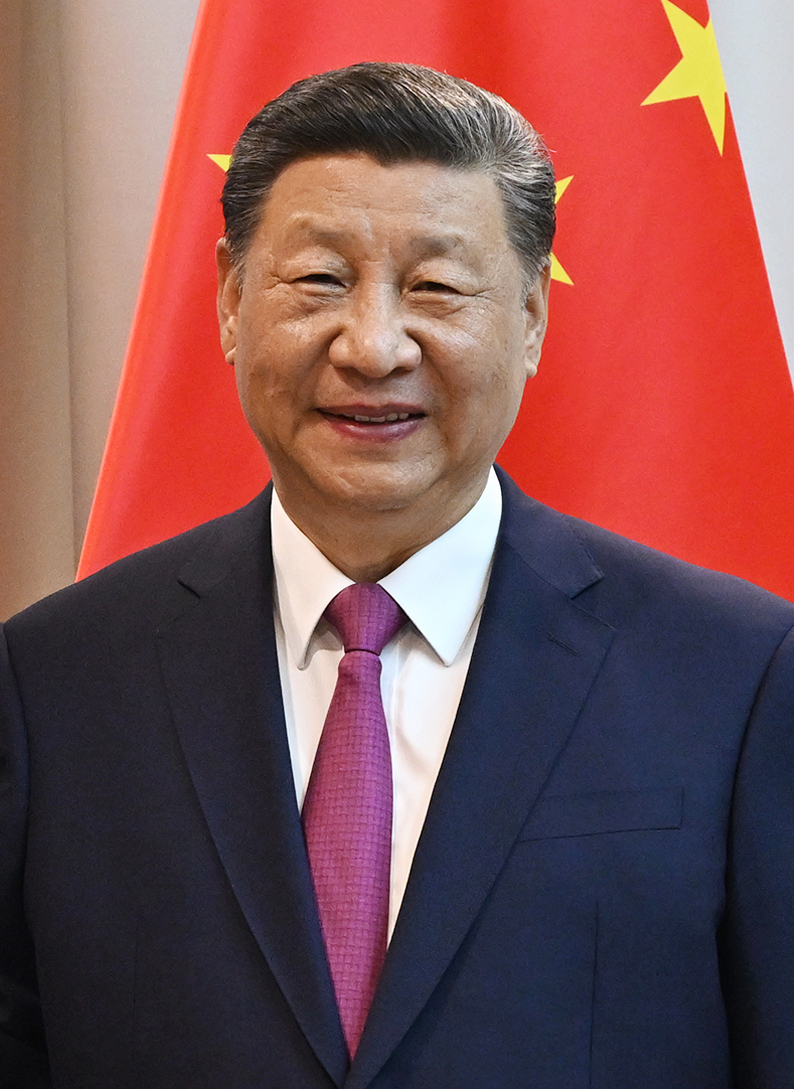
11. **Xi’s Vision for a New International System**: President Xi Jinping utilized the grand military parade and the preceding diplomatic engagements as a platform to articulate his ambitious vision for a new international system, one designed to replace the global order established in the aftermath of World War II. This forward-looking agenda seeks to position China as a central global power, actively shaping international affairs rather than merely reacting to existing norms.
At a 10-nation meeting in Tianjin prior to the parade, Mr. Xi unveiled this vision, explicitly calling for unity against “hegemonism and power politics.” This rhetoric directly challenged the prevailing American-led global order and its “America First” policies, suggesting a fundamental reorientation of international governance based on principles that China advocates. His message emphasized a cooperative future, explicitly stating, “Today, mankind is faced with the choice of peace or war, dialogue or confrontation, win-win or zero-sum,” positioning China firmly on the side of progress and dialogue.
Mr. Xi’s address reiterated his long-standing aspiration for the “rejuvenation of the Chinese nation,” proclaiming it “unstoppable.” He coupled this national ambition with a broader humanitarian goal, asserting that “the noble goal of the peaceful development of human civilization must triumph.” This aspirational language, backed by the immense military power showcased during the parade, reinforced the idea that China intends to play a leading, constructive, and powerful role in global affairs.
Analysts like Ryan Hass, director of the John L. Thornton China Center at the Brookings Institution, observed that “Xi is driven to gain acceptance of China as a central global power and to revise the international system to better suit China’s preferences.” Mr. Hass further noted that Xi viewed “the presence of other leaders at his parade as validating progress toward his goals,” underscoring the parade’s dual purpose of demonstrating power and garnering international endorsement for his revised world order.
Such a Chinese-led world order, according to some assessments, might prioritize raw power and economic development over traditional Western values such as territorial integrity and human rights, potentially proving “uncomfortable for many Western countries.” This alternative framework aims to redefine global governance, reflecting China’s growing influence and its strategic partnerships across Asia, Africa, and beyond.

12. **The Extensive PLA Modernization Drive**: Under President Xi Jinping’s leadership, the People’s Liberation Army (PLA) has undergone an extensive and ambitious modernization drive, aimed at transforming it into a “world-class” fighting force capable of rivaling, and eventually surpassing, the United States military. This commitment to military advancement has been a top personal priority for Mr. Xi, who has relentlessly pushed for significant improvements across all branches of the armed forces.
A key aspect of this modernization has been a fundamental shift in the PLA’s command structure. Moving away from a traditional Soviet-style, army-oriented model, Mr. Xi has overseen the transition to a joint operation system that more closely mirrors the organizational framework of the US military. This reform includes the creation or elevation of new branches to address emerging domains of warfare, such as the Rocket Force, which manages China’s nuclear arsenal and has recently been the focus of anti-corruption purges, ensuring both loyalty and efficiency.
China has concurrently invested billions of dollars into developing advanced weaponry, many examples of which made their public debut at the parade. Furthermore, the nation has effectively leveraged its vast industrial base to accelerate the production of military hardware, an effort that has seen the PLA Navy grow into the world’s largest. This rapid expansion across naval, air, and land capabilities demonstrates a comprehensive approach to enhancing China’s military prowess.
Brian Hart, a fellow of the China Power Project at the Center for Strategic and International Studies, highlighted Beijing’s objective to demonstrate to both domestic and international audiences that, despite internal challenges like corruption, its military is “increasingly advanced and lethal.” He stressed that the parade served as “an opportunity to show off the PLA’s advances under his leadership,” validating the significant resources and political capital invested in this transformative modernization effort.
As the world observes China’s “unstoppable” rise, the parade of power in Beijing offers more than just a fleeting glimpse into military capabilities; it provides a profound insight into a nation charting a new course in global affairs. From Tiananmen Square, President Xi Jinping articulated not merely a defense of China’s sovereignty but a bold vision for a reconfigured international system. The meticulously choreographed display, the strategic alignment of leaders, and the unveiling of cutting-edge technologies collectively underscored Beijing’s unwavering determination to challenge existing norms and assert itself as a central architect of the future global order. The implications of this new chapter resonate deeply, signaling a significant recalibration of power that will undoubtedly shape the trajectory of international relations for decades to come.



